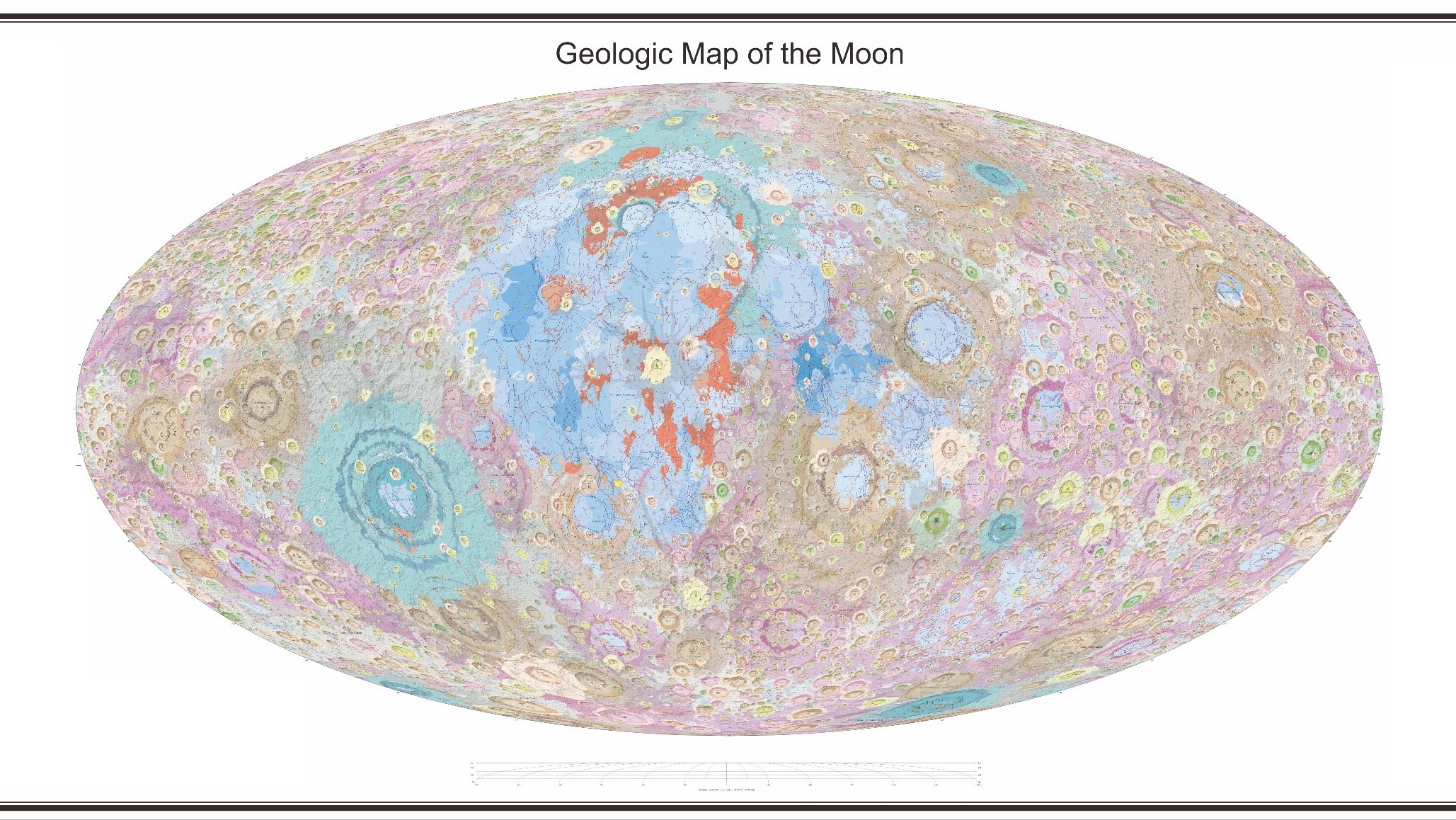China's new map of the moon captures lunar geologic features in incredible detail
The updated map could be used to aid future landing site selection.

Scientists have created a new high-resolution map of the moon using data from China's recent lunar missions.
The detailed map was created using data primarily from China's Lunar Exploration Program collected over the past 15 years, and was supplemented by high-quality data from international exploration missions from the U.S., Japan and India.
It reveals geologic layers, structural features and a chronology of the moon's surface, and includes 12,341 impact craters, 81 impact basins, 17 rock types and 14 types of structures.
Related: Amazing moon photos from NASA's Lunar Reconnaissance Orbiter
The map reflects "the evolution of lunar crust under igneous processes, catastrophic impacts and volcanic activities," the research team wrote in a paper accepted for publication in the journal Science Bulletin.
The map uses a Mollweide projection that creates an elliptical view of the moon; China also provided stereographic projections, separately centered on the north and south poles. Researchers could use the new work for further lunar geologic mapping and landing site selection for future missions.
The full-size map is available from the Chinese Academy of Sciences' National Space Science Center.
Get the Space.com Newsletter
Breaking space news, the latest updates on rocket launches, skywatching events and more!
Follow us on Twitter @Spacedotcom and on Facebook.
Join our Space Forums to keep talking space on the latest missions, night sky and more! And if you have a news tip, correction or comment, let us know at: community@space.com.

Andrew is a freelance space journalist with a focus on reporting on China's rapidly growing space sector. He began writing for Space.com in 2019 and writes for SpaceNews, IEEE Spectrum, National Geographic, Sky & Telescope, New Scientist and others. Andrew first caught the space bug when, as a youngster, he saw Voyager images of other worlds in our solar system for the first time. Away from space, Andrew enjoys trail running in the forests of Finland. You can follow him on Twitter @AJ_FI.









